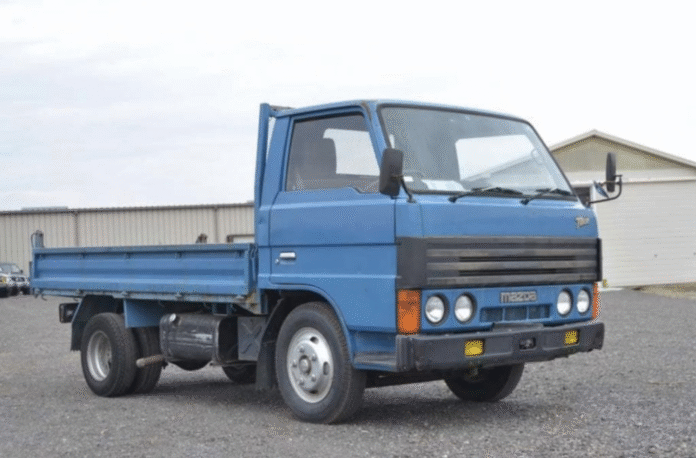Sourcing high-quality Japanese Mazda truck parts requires understanding the difference between genuine OEM components and aftermarket alternatives that vary wildly in quality and durability. Japanese manufacturing standards for automotive parts remain among the world’s highest, with tolerances measured in hundredths of millimeters and materials tested under extreme conditions. The challenge lies in navigating a global supply chain where counterfeit parts, refurbished components, and budget alternatives often masquerade as premium Japanese quality. Smart buyers focus on verified suppliers and understand which parts justify premium pricing versus where quality alternatives make sense.
Genuine OEM vs. OES Part Sources
Mazda’s official parts network through dealerships guarantees authenticity but often comes with significant price premiums. However, for critical engine components, transmission parts, and safety systems, the extra cost provides peace of mind and warranty protection that aftermarket alternatives can’t match.
Original Equipment Supplier (OES) parts come from the same manufacturers that supply Mazda’s assembly lines but are sold under different part numbers. Companies like Denso, Aisin, and NGK produce both OEM and aftermarket versions of their components, with aftermarket versions often costing 30-40% less while maintaining identical quality standards.
Mazda’s online parts catalog provides exact part numbers and compatibility information that helps verify authenticity when shopping with third-party suppliers. Cross-referencing these numbers prevents ordering incorrect parts that might fit but don’t meet original specifications.
Specialized Japanese Parts Importers
Direct importers like Amayama Trading and RHD Japan specialize in authentic Japanese automotive parts and maintain relationships with Japanese suppliers that aren’t available through U.S. distribution networks. These companies often stock hard-to-find parts for older Mazda truck models that dealers no longer carry.
Parts accessibility varies significantly between different Mazda truck models. B-Series trucks share components with Ford Rangers, making parts more readily available through domestic suppliers. However, Mazda-specific engines and transmissions often require Japanese sources for optimal quality and fit.
Import documentation and customs procedures affect delivery times and total costs. Reputable importers handle paperwork properly and provide tracking information, but budget suppliers might cut corners that result in customs delays or additional fees.
Quality Verification Methods
Packaging authenticity provides the first clue about part quality. Genuine Japanese parts typically include detailed packaging with multiple languages, holographic security features, and specific part number formatting that counterfeiters struggle to replicate accurately.
Material composition testing reveals quality differences that aren’t immediately visible. Genuine Japanese steel components often use specific alloy compositions that provide superior corrosion resistance and fatigue life compared to cheaper alternatives made from recycled materials.
Dimensional accuracy checking with precision measuring tools can identify substandard parts before installation. Japanese manufacturing typically maintains tolerances within 0.05mm, while budget alternatives might vary by several millimeters, affecting fit and performance.
Regional Supplier Networks
West Coast suppliers often have better access to Japanese parts through established shipping relationships and shorter transit times from Japanese ports. Companies in Los Angeles and Seattle frequently maintain larger inventories of Japanese truck parts due to proximity advantages.
Midwest suppliers sometimes offer competitive pricing through different distribution relationships, though delivery times might be longer. The trade-off between cost and availability depends on your specific timeline requirements and budget constraints.
Online marketplaces require careful supplier verification. eBay and similar platforms include both legitimate dealers and questionable sellers offering parts of unknown origin. Checking seller ratings, return policies, and communication responsiveness helps identify trustworthy sources.
Performance Testing and Validation
Fitment testing should happen immediately upon receiving parts, before installation begins. Japanese parts are engineered for precise fit, so any binding, excessive play, or alignment issues indicate potential quality problems or incorrect part selection.
Material hardness testing using simple tools can verify metallurgical properties of critical components like brake rotors, suspension components, and engine internals. Genuine Japanese parts typically use specific steel grades that provide predictable performance characteristics.
Long-term Cost Considerations
Initial purchase price rarely reflects total ownership costs over the part’s service life. Premium Japanese components often last 50-100% longer than budget alternatives, making them more economical despite higher upfront costs.
Warranty coverage varies significantly between suppliers and part types. Genuine OEM parts typically include comprehensive warranties, while aftermarket parts might have limited coverage that doesn’t protect against consequential damages from part failure.
Installation compatibility affects labor costs and downtime. Parts that require modifications for proper fitment increase installation expenses and might void other component warranties, making premium parts that fit correctly the more economical choice overall.
